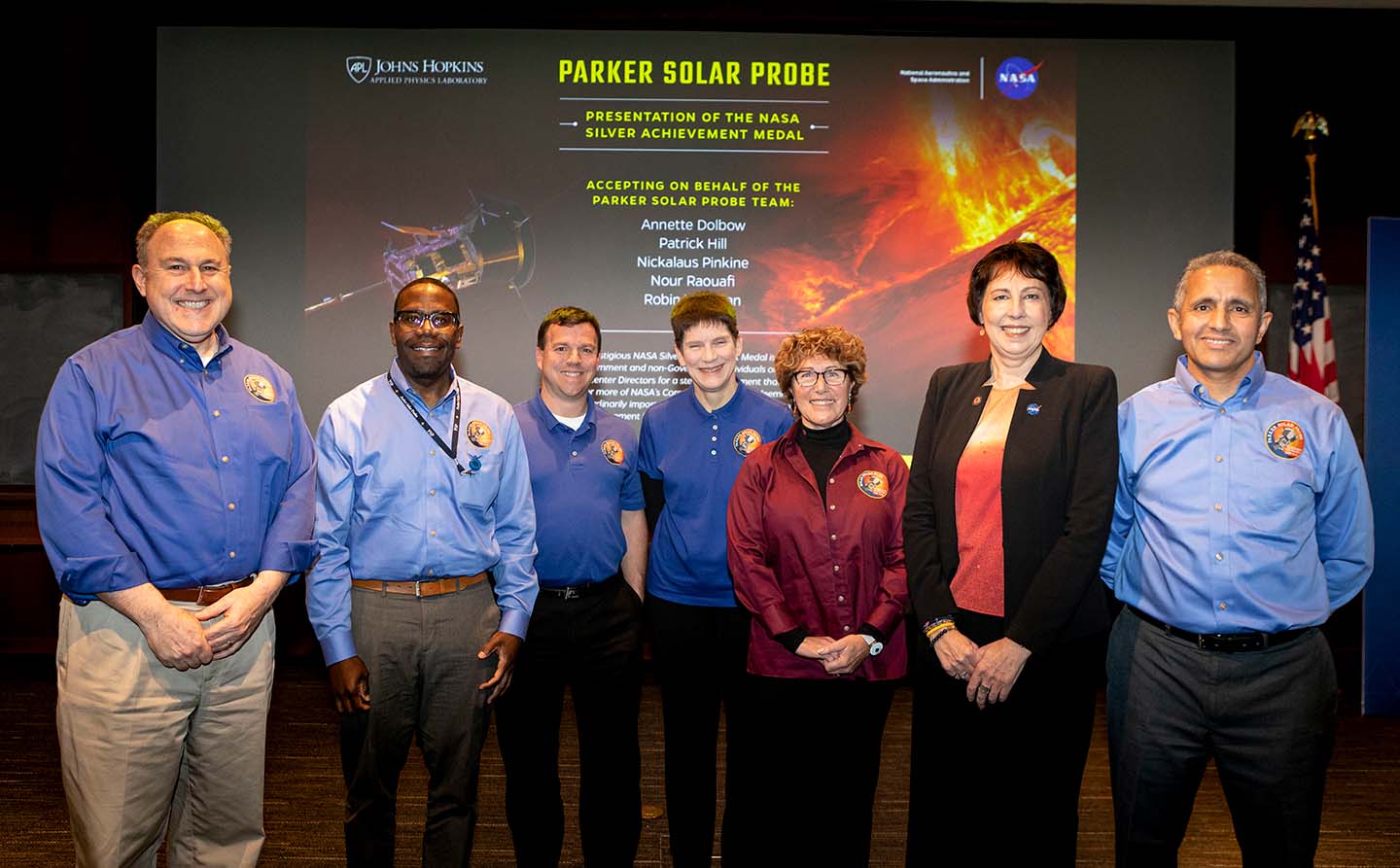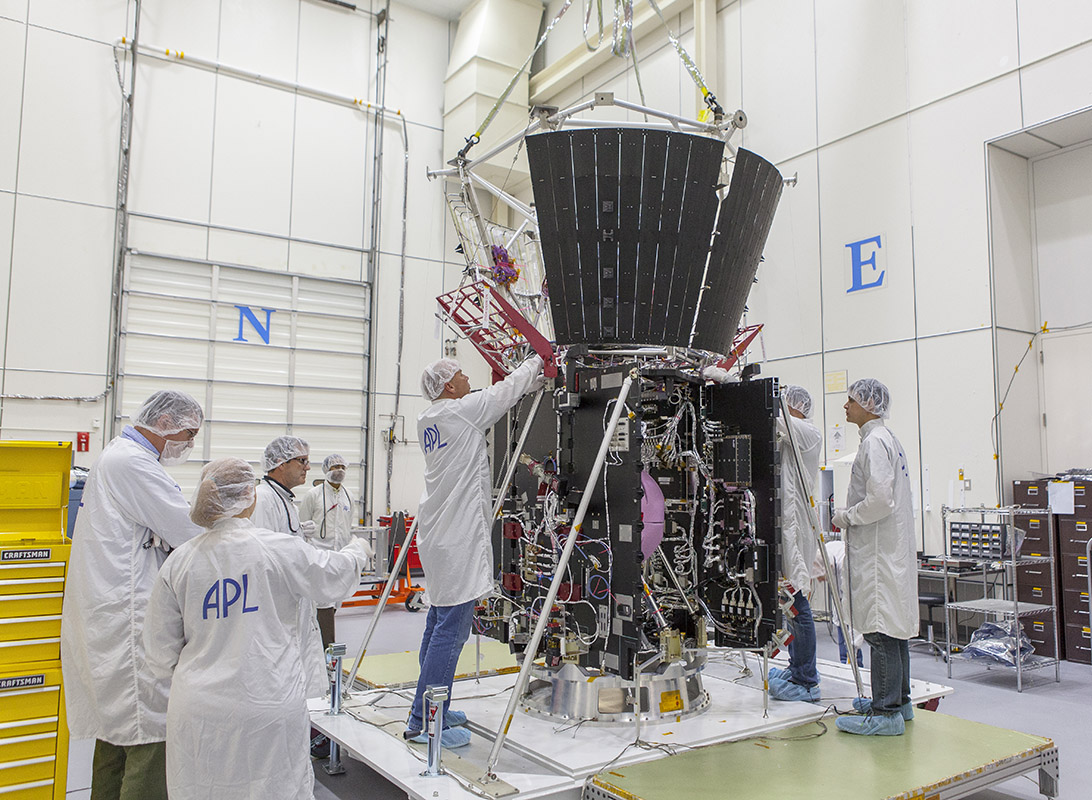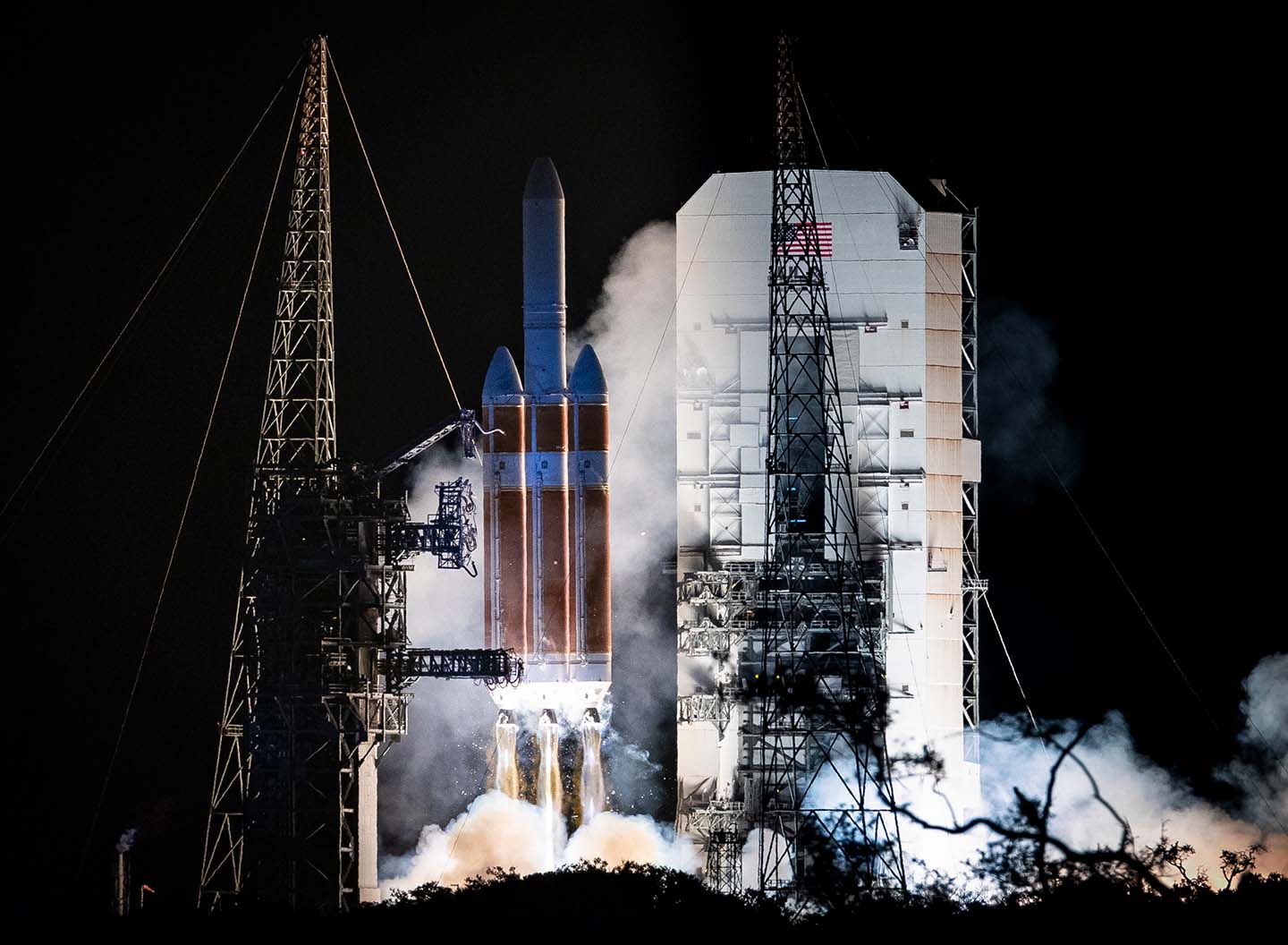Press Release
Parker Solar Probe Team Awarded NASA Silver Achievement Medal
Parker Solar Probe has been awarded the NASA Silver Achievement Medal in recognition of its “stellar achievement” as humanity’s first mission to explore the Sun’s corona and the solar wind within the extreme environment around our star.
The medal is awarded to government and nongovernment individuals or teams by NASA center directors “when it is deemed to be extraordinarily important and appropriate to recognize such achievement.” The medal was announced earlier this year at the NASA 2019 Agency Honor Awards at NASA’s Goddard Space Flight Center in Greenbelt, Maryland.
During a Nov. 12 ceremony at the Johns Hopkins Applied Physics Laboratory (APL) in Laurel, Maryland, mission leadership spoke about the challenges of creating and launching Parker Solar Probe. The mission represents the culmination of a 60-year quest to create a spacecraft that could withstand the intense heat and radiation of the near-Sun environment while delivering revolutionary science about heliophysics. APL designed, built and operates the mission for NASA.
“This is an incredibly complex spacecraft and mission unlike any that had been built before,” said APL’s Jason Kalirai, Civil Space mission area executive. “It’s a mission we’ve waited 60 years to accomplish because of the challenges of building a spacecraft that could operate close to the Sun. The science that Parker Solar Probe is already returning will rewrite the textbooks on our understanding of stars and heliophysics. We’re very proud of NASA’s recognition of the mission’s accomplishments so far, and we’re only a little over one year into a seven-year mission.”
The Sun’s powerful influence over the solar system was not really understood until the early years of the Space Age. Then, in 1958, physicist Eugene Parker published a groundbreaking scientific prediction theorizing the existence of a supersonic flow of particles from the Sun into the interplanetary medium that we now call the solar wind. In 1959, the National Academy of Sciences’ Simpson Committee submitted a list of exploration missions America should pursue through an agency that would become NASA, including a probe to study the Sun’s corona. Parker Solar Probe is the first NASA mission to be named after a living person.


